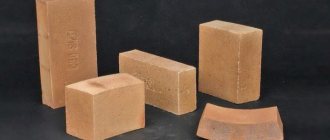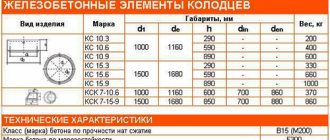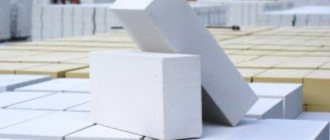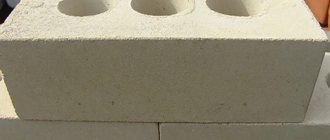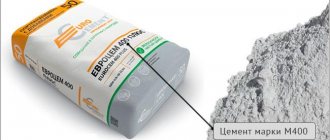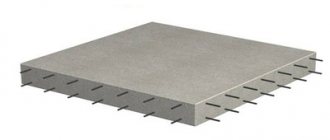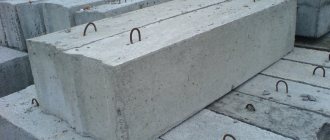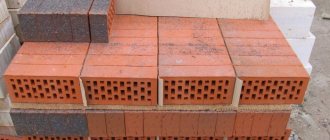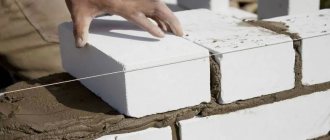Brick is an integral part of almost any construction. The most common and recognizable is the familiar red brick. However, there are several more types of bricks used in highly specialized work.
Fireclay brick is a special type of brick used for masonry exposed to high temperatures. This type is successfully used for laying furnace fireboxes, chimneys and other structures that have direct contact with fire. Due to its fire-resistant properties, such bricks can withstand temperatures up to 1800°C .
How fire bricks are made. Compound
Production involves firing a special mixture, on average 70% kaolin clay and 30% fireclay powder. Proportions may vary depending on the type of fireclay block being made. To give the product greater strength, coke or graphic impurities can be added to the mixture.
Firing is carried out under the strictest control of temperature and time parameters, which makes it possible to obtain a light yellow block with smooth surfaces (see photo).
To check the “authenticity” of the block, you can lightly hit it - if it is a real fireclay brick, when hit it will “respond” with a ringing, slightly metallic sound.
Deviations from the firing technology are unacceptable: if you “burn” the product, it will be covered with a transparent film that prevents adhesion to the laying mortar during laying.
Short description
Refractory bricks for stoves are capable of not collapsing and deforming under the influence of high temperatures - the main difference from conventional building materials. It is made from several types of clay with the addition of substances that increase the heat resistance of products.
It is recommended to use several types of building materials when laying individual parts of the stove. To cover the outer layer, red ceramic or white silicate is used, and the firebox is lined with fireclay bricks. It is important to maintain the overall color scheme of the heater on the outside and inside.
In order not to overpay, you should not buy parts with a grade above M-300 . The digital value indicates the safety factor of the products. If the grade is below 100, the material is of poor quality with improper geometry and density of the material. M-500 bricks are used for laying industrial or powerful units.
Marking and symbols according to GOST
The characteristics of fireclay products are clearly regulated by the relevant technical documentation - GOST 8691-73 and GOST 390–96 . GOSTs specify all the technical characteristics and indicators that fireclay blocks must comply with.
For a clear classification of fireclay bricks, there is a certain marking that reflects the main characteristics of the product.
The marking consists of 2 or 3 letters and numbers:
- The first letter is “Ш” , indicating that the brick belongs to fireclay products.
- The second letter symbolizes the fire resistance class of the block. According to GOST, there are only three of them, each with a certain temperature maximum (see table below). If the second letter in the marking is missing, this indicates that the brick was manufactured not according to GOST , but according to TU - the standards of the manufacturer.
- The number following the letter designation is the geometric dimensions of the block. They are fixed and determined by GOST 8691-73 .
- The last letters in the marking indicate the manufacturer's abbreviation.
| Brand of refractory product | Maximum application temperature (degrees C) |
| SHAK, SHA | 1400 |
| ShB | 1350 |
| SHV, SHUS | 1250 |
| PB | 1350 |
| PV | 1250 |
Main types
Many manufacturers met customers halfway and began producing fireclay stone of various types, differing in shape, weight and size, as well as manufacturing technologies and degree of porosity. Today, the following forms of fireclay are presented on the construction market:
- straight;
- arched;
- trapezoidal;
- wedge-shaped.
Thanks to this variety of forms, it became possible to erect structures with complex structures.
The following types of fireclay stone with different percentages of porosity are distinguished:
- ultra-lightweight (more than 85%);
- lightweight (45-85%);
- increased porosity (30-45%);
- medium-dense (20-30%);
- compacted (16-20%);
- dense (10-16%);
- high-density (3-10%);
- especially dense (less than 3%).
Such qualities make it possible to understand which brand is best to choose for the construction of specific structures. As for the method of forming bricks, the following options are distinguished:
- fused;
- cast;
- hot pressed;
- thermoplastic extruded;
- molded using the plastic or semi-dry method.
Technologists at large factories continue to develop new product options. They add new components to the composition that improve its quality. In addition, production technology is improving, which makes it possible to obtain products with unusual properties. Thus, fireclay appeared, which has the ability to withstand extremely low temperatures.
Dimensions and specifications
| Index | Meaning |
| Fire resistance, °C | 1100-1800 |
| Density, kg/m³ | 1700–1900 |
| Thermal conductivity coefficient, W/m °C | 0,6 |
| Strength grade | 75–250 |
| Frost resistance grade | 15–50 |
| Porosity, % | 3-85 |
The specific heat capacity of fireclay brick is 833 J/(kg deg) at 100°C and 1251 J/(kg deg) at 1500°C .
Modern manufacturers offer a lot of varieties of fireclay blocks, differing not only in type, size or weight, but also in fire resistance class. To make your choice easier, it is enough to know the main characteristics of the products:
- Dimensions. Today, manufacturers offer a wide “size range” of fireclay blocks. The most popular brick sizes are 230*114*65 mm and 250*124*65 mm.
- Form. There are several types of fireclay block shapes: standard rectangular, trapezoidal, arched or wedge-shaped.
- Porosity. This indicator affects the heating time of the brick and its heat transfer. More porous products heat up faster and release heat more slowly, but have less strength. 1700–1900 is considered optimal .
| Designation, brand | Dimensions, mm | Form |
| ShB-5 | 230 x 114 x 65 | straight |
| ShB-6 | 230 x 114 x 40 | straight (fly) |
| ШБ-8 | 250 x 124 x 65 | straight |
| ShB-9 | 300 x 150 x 65 | straight |
| ShB-22 | 230 x 114 x 65/55 | end wedge |
| ShB-23 | 230 x 114 x 65/45 | end wedge |
| ShB-25 | 250 x 114 x 65/55 | end wedge |
| ShB-44 | 230 x 114 x 65/55 | rib wedge |
| ShB-45 | 230 x 114 x 65/45 | rib wedge |
| ShB-29, 30 | 300 x 150 x 65/55 (65/45) | end wedge |
| ShB-47 | 250 x 114 x 65/55 | rib wedge |
| SHA-5 | 230 x 114 x 65 | straight |
| SHA-6, SHA-14 | 230 x 114 x 40 | straight |
| SHA-8 | 250 x 124 x 65 | straight |
| SHA-9 | 300 x 150 x 65 | straight |
| SHA-22 | 230 x 114 x 65/55 | end wedge |
| SHA-23 | 230 x 114 x 65/45 | end wedge |
| SHA-25 | 230 x 114 x 65/45 | end wedge |
| SHA-29, SHA-30 | 300x150x65/55 | end wedge |
| SHA-44, SHA-45, SHA-49 | 230 x 114 x 65/55 (65/45) | rib wedge |
Application
Fire-resistant brick, the characteristics of which are different from conventional masonry materials, has found its application in the construction of thermal units. In the metallurgical industry, melting iron, nickel, and copper requires temperatures above 1500 degrees, so the furnaces in such production are lined exclusively with dolomite, silica, and chromium-magnesite bricks. Dinas stone is used for arches and lining of furnaces working with acidic substances. It expands at temperature, but magnesite refractory contracts, so an arch using the latter can collapse. That is, each type of this category of brick has different properties and methods of use.
In the non-metallurgical industry, refractory stone is used for masonry of chemical production equipment, municipal boiler houses, coke kilns; units of glass factories.
Weight
Permissible weight according to standards is 3.7 kg. Depending on the porosity and density, products made according to GOST can weigh from 2.8 to 3.7 kg, and bricks made according to specifications can weigh up to 4.5 kg.
| Size | Weight of one brick (kg) | Weight of bricks on a pallet, (kg)/ (Number of pieces) | Weight m3 of brick, (kg)/ (Number of pieces) |
| Single | 3,5 — 4 | 1350-1600 (385-400) | 1745-2050 (513) |
What it is?
Fireclay brick is characterized by a very simple composition; it is based on crushed, dried fireclay powder, the concentration of which is 65-70%. This substance is made from simple white clay, which is cleaned and fired for a long time, due to which it exhibits pronounced fire-resistant characteristics. Additionally, coke and graphite fillers and coarse quartz grains are introduced into the raw materials. The initial components are thoroughly mixed, then shaped and sent for firing and crimping.
It is the firing features that determine the basic operational parameters of the material. The duration of baking of the material is of great importance. So, if the raw material is kept in a thermal oven, then a glassy film appears on its surface. It is quite durable and gives the material special resistance to mechanical damage, but at the same time its fire resistance decreases.
If, on the contrary, the firing is insufficient, such a material will perfectly absorb and retain moisture within itself, and therefore its strength will be very doubtful. The best brick for stoves and fireplaces can only be obtained if you adhere to the “golden mean”.
The production of fireclay bricks is regulated by current standards, and its dimensions and weight can often vary significantly: from 2.5 to 6 kg, and the parameters are 230x111x65 mm, as well as 300x150x65 and 250x123x65 mm. In addition, products differ in the density and porosity of their structure.
What mortar should I use for laying?
The technology for working with fireclay bricks is slightly different from the technology for conventional masonry. The main difference lies in the mortar used to hold the blocks together - fireclay masonry will require a special fireproof mixture that is resistant to high temperatures.
The basis of such a solution will be fireclay mortar - a mixture consisting of fireclay sand, cement and ground refractory clay. When using a ready-made dry mixture, you will need clean water with a minimum amount of salts.
Water is added to the dry mixture at the rate of 40 kg of fireclay mortar per 100 blocks. The solution is stirred until thickened; the finished mixture should resemble thick sour cream in consistency. It is best to mix with an electric drill or a special mixer - this will significantly save time and effort.
After mixing, the solution must be left for an hour, then mixed thoroughly again. After this you can start working.
Advantages
- increased strength;
- high fire resistance;
- high heat capacity;
- sufficient resistance to various types of negative environmental influences;
- the possibility of trouble-free operation without deformation and wear for many years;
- Thanks to the smooth, dense surface, it is possible to install fireplaces and stoves without subsequent finishing.
What to cut with?
To produce fireclay blocks of non-standard sizes, production uses stone-cutting machines that provide high-quality cutting in large volumes and are equipped with a water supply system to cool the disk and prevent the appearance of fireclay dust.
At home, a stone cutting machine is a luxury. Therefore, to cut fireclay bricks, you will need to immerse the block in cold water for 20 minutes , and then cut with a regular grinder, using a diamond, cutting or abrasive disc. Moisture absorbed into the brick will ensure easy cutting and no dust. Before picking up an angle grinder, I strongly recommend that you read this article >>>
Flaws
- Fireclay brick blocks, due to their high strength, are extremely difficult to cut;
- very high cost;
- installation requires a special solution;
- The laying of fireclay brick structures must be carried out exclusively by a highly qualified specialist.
Methods of application, installation methods, possible options for structures built from fireclay bricks are shown in photo and video materials. Excellent reviews from both builders and customers who have experience in the operation and use of fireclay brick structures make it an indispensable material in the construction of various objects and structures.
Manufacturers of fireclay bricks
Very often, brick manufacturers, instead of GOST , use their own specifications (production conditions developed by the manufacturer), which raises a lot of questions among buyers. Therefore, when choosing a brick for refractory masonry, it is better to focus on blocks made in accordance with GOST - this way you are guaranteed to receive high-quality materials made in compliance with all standards and technologies.
The most famous manufacturers of fireclay bricks and refractories are:
- Sukholozhsky refractory plant.
- JSC "Novomoskovskogneupor"
- Borovichi refractory plant.
- JSC "Snegirevskie Refractories"
- OJSC Semiluksky Refractory Plant.
Where can I buy?
This question is important for many home craftsmen. Definitely large specialized construction stores. It is better if the company is an official dealer of the manufacturer.
The most important thing is where to buy stove blocks. It is much more important to check their quality and all documentation from the sellers. Sometimes construction markets charge high prices for products from well-known brands. Use the data provided in this article and carefully check the quality and measure the dimensions of heat-resistant bricks. At the slightest deviation, think - maybe go to another store and look for quality material?
